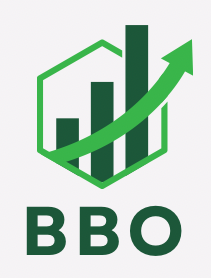
In today’s digital age, online marketing has become essential for businesses of all sizes. With billions of people connected to the internet, the potential to reach your target audience has never been greater. However, with this vast opportunity comes intense competition. Therefore, businesses must adopt effective online marketing strategies to stand out, drive traffic, generate leads, and convert prospects into customers.
The following guide explores key strategies for achieving online marketing success, offering a comprehensive roadmap for those looking to elevate their digital presence and drive sustainable growth.
1. Understand Your Audience: Define Your Buyer Personas
One of the most fundamental aspects of online marketing is understanding who you are trying to reach. Defining clear buyer personas — fictional representations of your ideal customers — is a critical first step toward tailoring your marketing efforts.
Steps to Define Buyer Personas:
- Conduct research: Analyze your current customer base through surveys, interviews, and demographic data.
- Segment by behavior and preferences: Look at purchasing behavior, pain points, and motivations.
- Develop multiple personas: Most businesses have more than one type of customer, so create detailed profiles for each.
Once your personas are defined, you’ll be able to craft messaging, select platforms, and design content that resonates with each segment of your audience. The more specific and targeted your approach, the more effective your marketing will be.
2. Build a Strong Brand Identity
A consistent, compelling brand identity is crucial for building recognition and trust in the digital space. Your brand identity encompasses your visual elements (logo, colors, typography), messaging, and overall tone.
Key Elements of a Strong Brand Identity:
- Brand voice: The tone you use in your communication, whether it’s professional, playful, or conversational, should match your brand’s values and appeal to your audience.
- Visual identity: Consistent use of color schemes, fonts, and design elements across all platforms (website, social media, emails) helps create a cohesive brand image.
- Brand values and mission: Clearly communicate your mission and values. Consumers increasingly support brands that stand for something beyond profit.
3. Develop a Content Marketing Strategy
Content marketing is a long-term strategy that focuses on creating valuable, relevant, and consistent content to attract and engage a target audience. This strategy helps build trust and authority, establish thought leadership, and drive organic traffic to your website.
Steps to Build a Content Marketing Strategy:
- Create a content calendar: Plan the types of content you will publish (blog posts, videos, infographics, podcasts) and their frequency.
- Focus on value: Create content that answers questions, solves problems, or educates your audience. For instance, “how-to” guides, industry insights, or product reviews often perform well.
- Optimize for SEO: Ensure your content is search engine optimized to drive organic traffic. This includes keyword research, internal linking, and optimizing meta tags and images.
Popular Types of Content:
- Blog posts: Written articles on topics relevant to your audience that can also improve your site’s SEO.
- Videos: Short, engaging videos are highly shareable and tend to generate more interaction, especially on social media platforms.
- Infographics: Visual representations of data that simplify complex information and make it more engaging.
- Case studies and testimonials: Show how your product or service has helped real customers, building credibility.
- Ebooks and whitepapers: Long-form, in-depth content that can be offered in exchange for contact information, helping to generate leads.
4. Search Engine Optimization (SEO)
SEO is the process of optimizing your website and content to rank higher in search engine results. A well-executed SEO strategy can drive significant organic traffic, making it one of the most cost-effective marketing methods.
Key SEO Strategies:
- On-page SEO: Focus on optimizing individual web pages with relevant keywords, meta descriptions, header tags, and image alt text.
- Technical SEO: Ensure your site has fast load times, a mobile-friendly design, and clean code, as these factors impact search rankings.
- Content creation and optimization: Consistently publish high-quality content that is relevant to your audience and includes targeted keywords.
- Backlinks: Earn links from reputable websites to improve your domain authority. Reach out to industry influencers or partner with complementary businesses for guest blogging opportunities.
- Local SEO: If you have a physical location, optimize your website for local searches by claiming your Google My Business listing and encouraging customers to leave reviews.
5. Social Media Marketing
Social media platforms offer a powerful way to connect with your audience, build brand awareness, and drive traffic. However, success requires a well-thought-out approach.
Tips for Social Media Marketing Success:
- Choose the right platforms: Not all social media platforms are the same, and you don’t need to be on all of them. Choose the platforms where your audience spends the most time (e.g., Instagram for younger audiences, LinkedIn for B2B).
- Create shareable content: Produce content that resonates with your audience and encourages them to engage or share with their own networks.
- Consistency is key: Regular posting keeps your audience engaged and ensures your brand stays top of mind. Use a content calendar to plan and schedule posts.
- Leverage social media ads: Organic reach on social media is declining, so paid ads on platforms like Facebook, Instagram, and LinkedIn can help you reach a larger audience.
- Influencer marketing: Partner with influencers who align with your brand to reach their followers. Influencers can create authentic content that resonates with their audience, leading to higher engagement and trust.
6. Email Marketing
Email marketing is one of the most effective channels for nurturing leads and maintaining customer relationships. It allows for personalized communication and direct engagement with your audience.
Strategies for Effective Email Marketing:
- Build a quality email list: Focus on growing a list of engaged subscribers. Avoid buying lists; instead, encourage sign-ups through lead magnets like free guides, discounts, or exclusive content.
- Segment your list: Divide your email list into segments based on behavior, preferences, or demographics. This allows for personalized and relevant content.
- Automated email campaigns: Set up automated workflows like welcome series, abandoned cart emails, or post-purchase follow-ups to nurture your leads and drive conversions.
- Engage with valuable content: Don’t just send sales pitches. Mix in valuable information like tips, tutorials, or industry insights to keep your audience engaged.
- A/B testing: Continuously improve your campaigns by testing different subject lines, layouts, and calls to action.
7. Paid Advertising: Pay-Per-Click (PPC)
PPC advertising is a highly effective strategy for driving traffic to your website through paid placements on search engines or social media platforms. With PPC, you pay for each click, so targeting is crucial to maximize your return on investment.
Key PPC Strategies:
- Search engine advertising: Use platforms like Google Ads to display ads to users who search for specific keywords related to your business. This can be an excellent way to capture intent-driven traffic.
- Social media advertising: Facebook, Instagram, LinkedIn, and Twitter all offer robust advertising platforms that allow you to target users based on demographics, interests, and behaviors.
- Remarketing: Target users who have previously visited your website or interacted with your content but didn’t convert. Remarketing ads help keep your brand in front of potential customers.
- Optimize landing pages: The page that users land on after clicking an ad should be optimized for conversions with clear calls to action, easy navigation, and a compelling offer.
- Track performance: Use analytics to monitor the performance of your campaigns and adjust based on click-through rates (CTR), conversion rates, and cost per acquisition (CPA).
8. Conversion Rate Optimization (CRO)
Driving traffic is only half the battle. Once visitors land on your website, you need to convert them into leads or customers. Conversion Rate Optimization (CRO) involves tweaking various elements of your website and sales funnel to improve the percentage of visitors who take action.
CRO Techniques:
- Use clear calls-to-action (CTAs): Ensure that your CTAs are prominent, clear, and lead users to take the desired action, such as signing up for a newsletter or making a purchase.
- Simplify navigation: A user-friendly website structure encourages visitors to explore and reduces bounce rates.
- Optimize for mobile: More users are browsing and shopping on mobile devices, so your website must be mobile-friendly to avoid losing conversions.
- A/B testing: Test different elements of your site, such as headlines, CTA buttons, and page layouts, to see what drives the most conversions.
- Build trust: Include testimonials, trust badges, and case studies to build credibility and reduce friction in the purchasing decision.
9. Leverage Analytics and Data
In online marketing, data is your best friend. Without tracking and analyzing your efforts, you’ll have no way of knowing what’s working and what’s not. Data allows you to make informed decisions and refine your strategies for better results.
How to Use Analytics Effectively:
- Set up Google Analytics: This free tool helps track website traffic, user behavior, and key metrics like bounce rates and conversion rates.
- Define key performance indicators (KPIs): Identify the metrics that matter most to your business, such as website visits, leads generated, or return on ad spend (ROAS).
- Track performance across channels: Use tools like social media analytics, email campaign reports, and PPC performance metrics to gauge the effectiveness of each channel.
- Use heatmaps: Tools like Hotjar or Crazy Egg provide visual data showing where users are clicking and how they navigate your site, offering insights for improving design and usability.
10. Adapt to Changes and Stay Innovative
The digital landscape is constantly evolving. Platforms, algorithms, and user preferences shift over time, and successful marketers must be adaptable.
How to Stay Ahead:
- Keep up with trends: Follow industry blogs, join online communities, and stay updated on changes to platforms like Google, Facebook, and Instagram.
- Experiment with new technologies: Whether it’s voice search, chatbots, or virtual reality, integrating new technology into your marketing can give you a competitive edge.
- Continuously learn: Digital marketing courses, webinars, and certifications can help you stay ahead of the curve.
Conclusion
Online marketing success doesn’t happen overnight. It requires a strategic and multifaceted approach that combines understanding your audience, building a strong brand, optimizing your content and SEO, leveraging social media, and utilizing paid advertising. A focus on data-driven decision-making and continuous learning ensures that you can adapt to changes in the digital landscape and maintain a competitive edge.
By implementing these strategies, businesses can not only improve their online presence but also build meaningful relationships with their customers, driving long-term growth and success.

